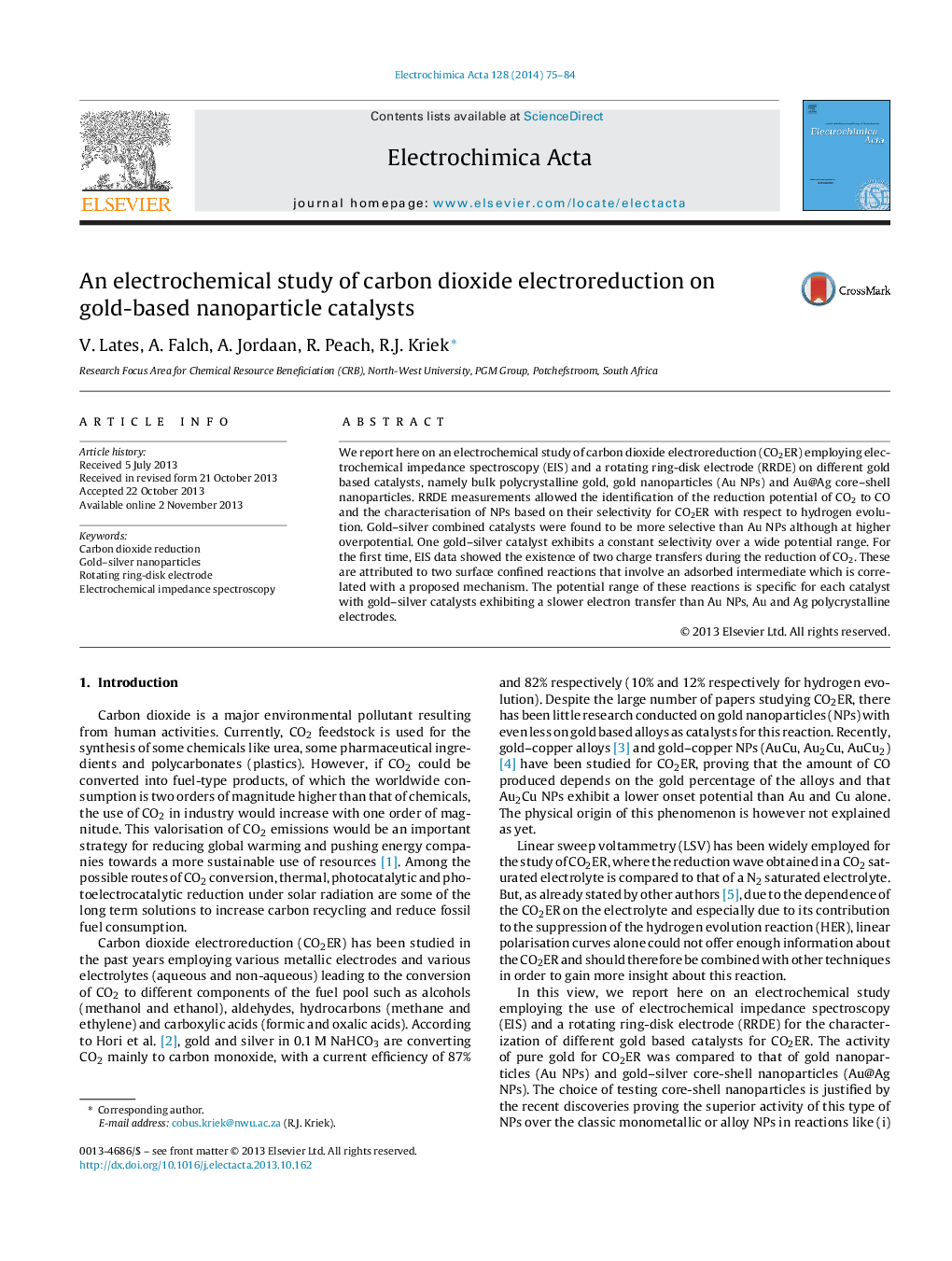| Article ID | Journal | Published Year | Pages | File Type |
|---|---|---|---|---|
| 186076 | Electrochimica Acta | 2014 | 10 Pages |
•Gold–silver nanoparticles were used as catalysts for carbon dioxide reduction (CO2ER).•Gold–silver nanoparticles present higher selectivity for CO2ER than Au nanoparticles.•Electrochemical impedance spectroscopy (EIS) was used to study CO2ER.•The two charge transfers observed during EIS are associated with an adsorbed intermediate.•Rotating ring-disk electrode runs revealed the potential of CO2ER for each catalyst.
We report here on an electrochemical study of carbon dioxide electroreduction (CO2ER) employing electrochemical impedance spectroscopy (EIS) and a rotating ring-disk electrode (RRDE) on different gold based catalysts, namely bulk polycrystalline gold, gold nanoparticles (Au NPs) and Au@Ag core–shell nanoparticles. RRDE measurements allowed the identification of the reduction potential of CO2 to CO and the characterisation of NPs based on their selectivity for CO2ER with respect to hydrogen evolution. Gold–silver combined catalysts were found to be more selective than Au NPs although at higher overpotential. One gold–silver catalyst exhibits a constant selectivity over a wide potential range. For the first time, EIS data showed the existence of two charge transfers during the reduction of CO2. These are attributed to two surface confined reactions that involve an adsorbed intermediate which is correlated with a proposed mechanism. The potential range of these reactions is specific for each catalyst with gold–silver catalysts exhibiting a slower electron transfer than Au NPs, Au and Ag polycrystalline electrodes.
Graphical abstractFigure optionsDownload full-size imageDownload as PowerPoint slide
